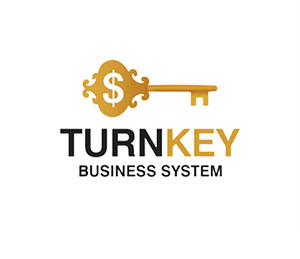How to Invest in Index Funds: Step-by-Step Guide for Beginners

How to Invest in Index Funds: Step-by-Step Guide for Beginners
Index funds are one of the most popular and effective tools for long-term investing. They offer a low-cost, diversified way to grow your wealth over time by mirroring market indexes like the S&P 500 or Total Stock Market. Ideal for beginners and seasoned investors alike, index funds remove emotional bias, simplify decision-making, and follow a proven path.
In this comprehensive guide, you'll learn exactly how to build a portfolio using index funds—even with minimal capital—by following a disciplined, structured strateg
In this comprehensive guide, you'll learn exactly how to build a portfolio using index funds—even with minimal capital—by following a disciplined, structured strateg

How to Invest in Index Funds: Step-by-Step Guide for Beginners
What Is an Index Fund and Why It Matters
An index fund is a mutual fund or ETF designed to replicate the performance of a specific market index. This approach removes fund manager bias and minimizes management costs—making it ideal for investors seeking passive, diversified, and long-term growth.Advantages include:
Ultra-low fees: expense ratios often < 0.10%
Broad diversification: spread risk across hundreds or thousands of stocks
Tax efficiency: minimal turnover means fewer capital gains distributions
Transparency: you know exactly what you own
Performance tracking: index funds tend to match index returns over time
Why Invest in Index Funds—Key Benefits
Cost-efficiencyNo active management means lower fees, translating to higher net returns.
Diversification
You automatically invest in multiple sectors and industries, reducing risk.
Long-term consistency
Historically, indexes like the S&P 500 have returned around 10% annually over decades—far surpassing most active strategies.
Simple and automated
Set up auto-invest plans and let time do the work.
Psychological edge
No more stress about picking winners or timing the market: you bet on the entire field.
Step‑by‑Step Process to Start Investing in Index Funds
Step 1: Choose a Brokerage PlatformLook for:
Commission-free ETFs — Vanguard, Fidelity, Schwab
Global options: eToro, Interactive Brokers
User-friendly interfaces, educational tools, auto-invest features
Regulatory reliability and secure customer support
Step 2: Fund Your Investment Account
Set up a bank account connection
Automate contributions—e.g., $50–$100 per pay period
Start small and build consistency
Step 3: Pick the Index or Market SegmentSome popular index options:
S&P 500 – large-cap US companies
Nasdaq‑100 – tech-heavy
Total US Market – broad coverage
International / Emerging Markets – global exposure
Consider sectors like green energy stocks or AI stocks, depending on your investing thesis.
Step 4: Choose the Right Index Fund or ETF
Important criteria:
Tick symbols like VOO, SPY, VTI, IXUS
Expense ratio: aim < 0.10%
Liquidity & spread: lower spreads = easier entry/exit
Tracking error: how closely the fund follows the index
Tax structure: e.g., U.S. ETFs vs. mutual funds
Step 5: Buy and Stick to the Plan
Place limit orders for best price
Avoid emotional trading
Set a buy-and-hold approach: consider holding for 5–10+ years
Automate and rebalance annually to realign with your risk profile
LSI Keywords & Concepts Embedded Naturally
By including phrases like best index funds for beginners, passive investing, long-term investment strategy, low risk investing, index investing, you ensure the content is semantically rich and future-proof—important for both SEO and AI-driven search formats.Case Study Example: $10,000 in VOO Over 20 Years
Invested in VOO (Vanguard S&P 500 ETF) in 2003Same investment grew to ~$68,000 by 2023
Annualized return ~10.2%
Key takeaway: time in market beats timing the market
This passive growth is a testament to compound returns and disciplined investing.
Common Mistakes Beginner Investors Should Avoid
- Timing the market—trying to buy at the exact bottom
- Choosing high-fee mutual funds with hidden costs
- Chasing short-term trends (e.g., altcoins to watch) over long-term stability
- Forgetting to have an emergency fund
- Over-diversifying into complex products without strategy
Rebalancing and Ongoing Management
Annual rebalance: reinvest dividends, rebalance weightingTrack performance: review portfolio quarterly or annually
Stay informed: follow market trends, economic news, inflation updates, and crypto market trends marketing sectors
Adjust gradually, avoid sudden reaction to volatility
Conclusion & Final Thoughts
Index fund investing is accessible, disciplined, and scalable. It prioritizes long-term growth, low cost, and minimal stress—perfect for investors building wealth deliberately.
Start with small, consistent contributions. Choose low-cost, high-diversity funds. Hold fast through ups and downs. Over time, simple strategies yield powerful results.
Want to explore passive investing strategies or compare index funds?
Visit fx24news.com for expert guidance and actionable insights.
By Miles Harrington
July 29, 2025
Join us. Our Telegram: @forexturnkey
All to the point, no ads. A channel that doesn't tire you out, but pumps you up.
Index fund investing is accessible, disciplined, and scalable. It prioritizes long-term growth, low cost, and minimal stress—perfect for investors building wealth deliberately.
Start with small, consistent contributions. Choose low-cost, high-diversity funds. Hold fast through ups and downs. Over time, simple strategies yield powerful results.
Want to explore passive investing strategies or compare index funds?
Visit fx24news.com for expert guidance and actionable insights.
By Miles Harrington
July 29, 2025
Join us. Our Telegram: @forexturnkey
All to the point, no ads. A channel that doesn't tire you out, but pumps you up.









Report
My comments